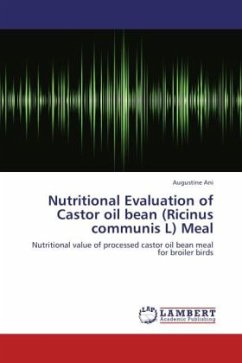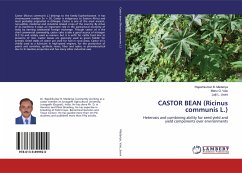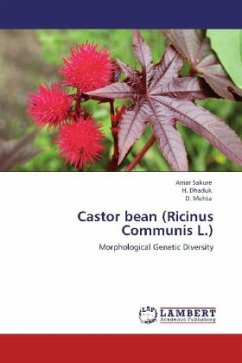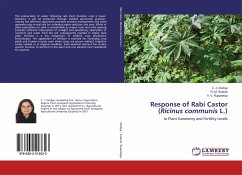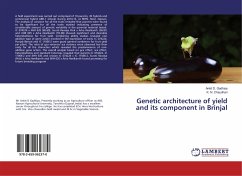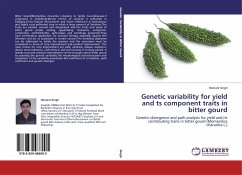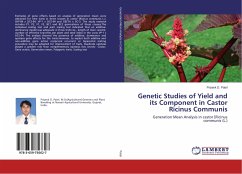
Genetic Studies of Yield and its Component in Castor Ricinus Communis
Generation Mean Analysis in castor [Ricinus communis (L.)
Versandkostenfrei!
Versandfertig in 6-10 Tagen
41,99 €
inkl. MwSt.

PAYBACK Punkte
21 °P sammeln!
Estimates of gene effects based on analysis of generation mean were obtained for nine traits in three crosses in castor (Ricinus communis L.): SKP-84 x DCS-94, VP-1 x DCS-94 and GEETA x GC-3. The study material includes P1, P2, F1, F2, BC1 and BC2 generations of these crosses.The individual scaling test and joint scaling test indicated that an additive-dominance model was adequate in three traits viz., length of main raceme, number of effective branches per plant and seed index in the cross VP-1 x DCS-94. The analysis showed the presence of additive, dominance and epistasis gene effects for th...
Estimates of gene effects based on analysis of generation mean were obtained for nine traits in three crosses in castor (Ricinus communis L.): SKP-84 x DCS-94, VP-1 x DCS-94 and GEETA x GC-3. The study material includes P1, P2, F1, F2, BC1 and BC2 generations of these crosses.The individual scaling test and joint scaling test indicated that an additive-dominance model was adequate in three traits viz., length of main raceme, number of effective branches per plant and seed index in the cross VP-1 x DCS-94. The analysis showed the presence of additive, dominance and epistasis gene effects for the traits.However, to exploit both additive and non-additive gene action reciprocal recurrent or biparental mating procedure may be adopted for improvement of traits. Duplicate epistasis played a greater role than complementary epistasis. Key words:- Castor, Gene action, Generation mean, Polygenic traits, Scaling test




